Fiorano Preferences are available under Window > Preferences > Fiorano.
The common preferences like security for Enterprise Server connections and JMX connections can be provided here.
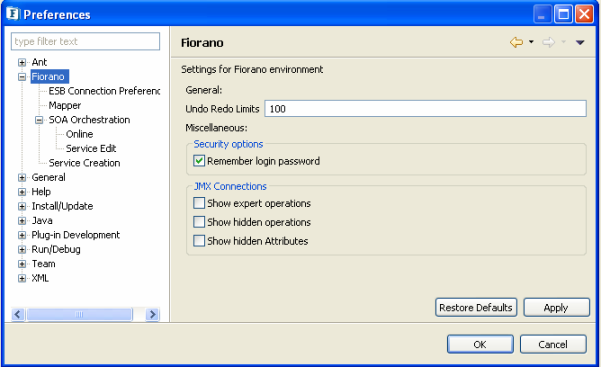
Figure 1: Fiorano preferences
Security Options
Remember login password: If this option is enabled, the password for any user logged out of Enterprise Server(in Online Event Process Development) and any Administrative or JMX Server (in Connection Management) is saved for the future login. The password is also saved in case the connected server goes down or when the studio is restarted.
By default this option is deseleted and the password fields are set to blank. Hence, while logging into an Enterprise Server for the first time or in future whenever the password field is emptied, a dialog box is prompted to enter the password wherein this preference can be set as well.
JMX Connections
By enabling the preferences under this section
- Show expert operations
- Show hidden operations
- Show hidden attributes
The user can view the expert operations, hidden operations and hidden attributes respectively for the JMX connection.
Various sections in Fiorano Preferences are explained in the following sections.
ESB Connection Preferences
Enterprise Server configurations can be defined here. List of Enterprise Servers can be added and the server details such as IP address, port and security credentials can be provided. These servers configuration is used in Offline Event Process Development perspective for actions (export Event Process to server, import Event Process from server etc.) that require a Server connection.
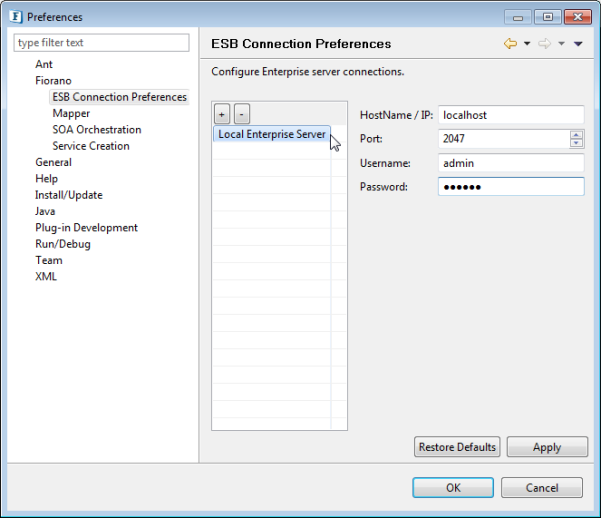
Figure 2: Enterprise Server Configurations
Restore Defaults button is used to restore the preferences to default values.
Mapper
Fiorano Mapper preferences are listed under this section.
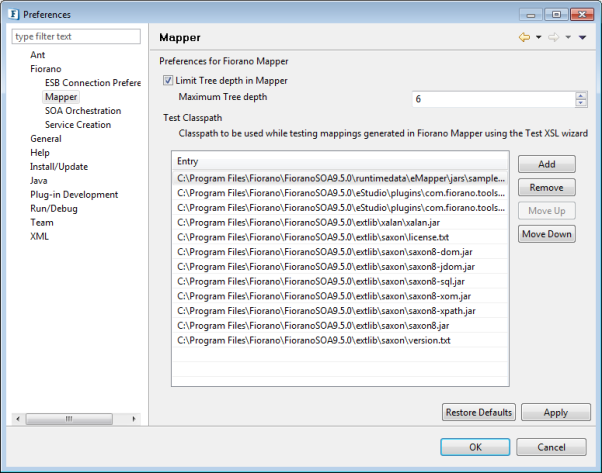
Figure 3: Mapper Preferences
Limit Tree depth in Mapper
When loading a structure to the input or output trees in Mapper, the whole structure is parsed in a single go and the tree is loaded with the entire structure. This can cause mapper to load slowly and can also cause memory issues while dealing with large/complicate structures.
Selecting the Limit Tree depth option allows the user to choose a Maximum tree depth which represents the depth till which nodes are automatically loaded. Nodes from deeper levels will be loaded on demand, i.e., if the user expands their parent nodes.
Test Classpath
Mapper allows users to test the mappings defined using the Test option (Refer section Testing the Transformation). If the mappings use Custom java functions, the user has to add them to the classpath before testing the transformation. This table provides the user an option to add/remove entries from the test classpath. Note: A few entries are added to the classpath by default viz., external libraries for Saxon and Xalan, DB look-up functions and jars added in %FIORANO_HOME%/runtimedata/eMapper/jars folder.
Orchestration
Orchestration preferences are grouped into General options, Workflow options, Service options and CPS options.
General Options
General Options contain preferences for Error Port and Routes Color and Route Shape. The preference chosen here will be applied in orchestration editor.
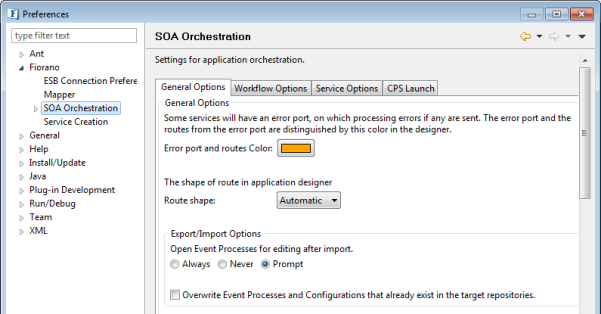
Figure 4: Orchestration Preferences
Workflow Options
Workflow options contain Workflow color information. Workflow Item color and Workflow End color used in Document tracking can be configured here.

Figure 5: Workflow options
Service Options
Service instance default configurations can be provided here. These default configurations are set on a service instance when a new service instance is created.
Default JVM Configurations
JVM configurations like classpath, System properties, memory options etc. can be defined. These options are used while launching the component in Separate Process launch mode.
These are the default configurations that are applicable to all the newly created service instances. Service Instances can also overwrite the default configurations set on them by making modifications in properties view.
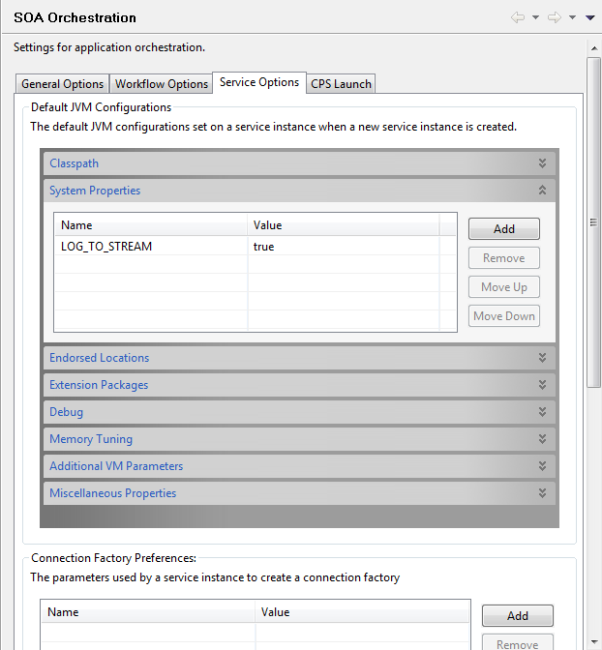
Figure 6: Service options
Configurations defined here are set on the Service Instance in Runtime Arguments section of the properties view. For example if the user wants to change the heap memory settings, he can provide the values for memory tuning properties as shown in Figure 7.
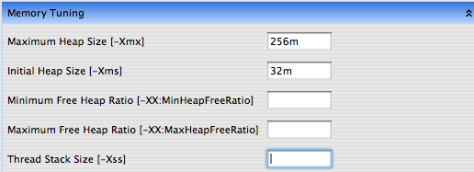
Figure 7: Memory tuning options
After defining these configurations, the default values are set when a service instance is drag-and-dropped in Orchestration editor and can be seen in Runtime Arguments section as shown in Figure 8.
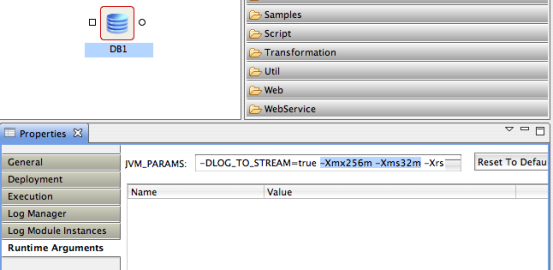
Figure 8: Runtime Arguments
These properties are set on the JVM on which the service instance will be launched.
Connection Factory Preferences
Configurations used by service instances while creating Connection factories can be defined here. The connection factories are created internally by using default configuration. To overwrite the defaults, user can set the properties here.
The properties defined here are available in Execution section in service instances properties view.
CPS Options
These options are used by external CPS launch components where the CPS is launched as a separate JVM process. The following components CPS is launched in separate process JVM: SapR3, XMLSplitter, SapR3Monitor, Aggregator, CBR, Join, CompositeBC, JMSIn:5.0, JMSOut:5.0 and JMSRequestor:5.0.
Apart from these prebuilt components, custom components CPS will also be launched in a separate process JVM.
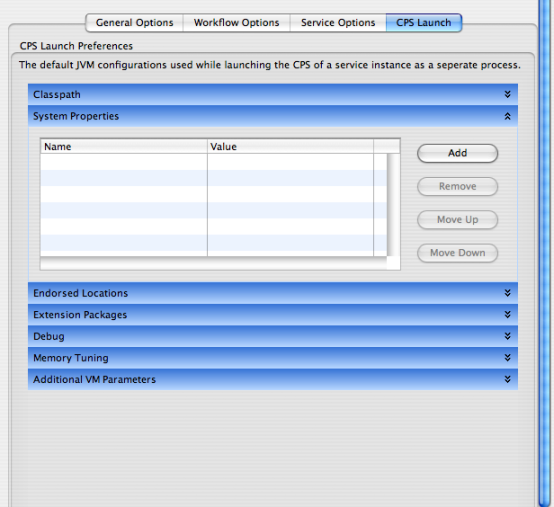
Figure 9: CPS launch options
Orchestration Online
This section contains configurations for online Event Process orchestration.
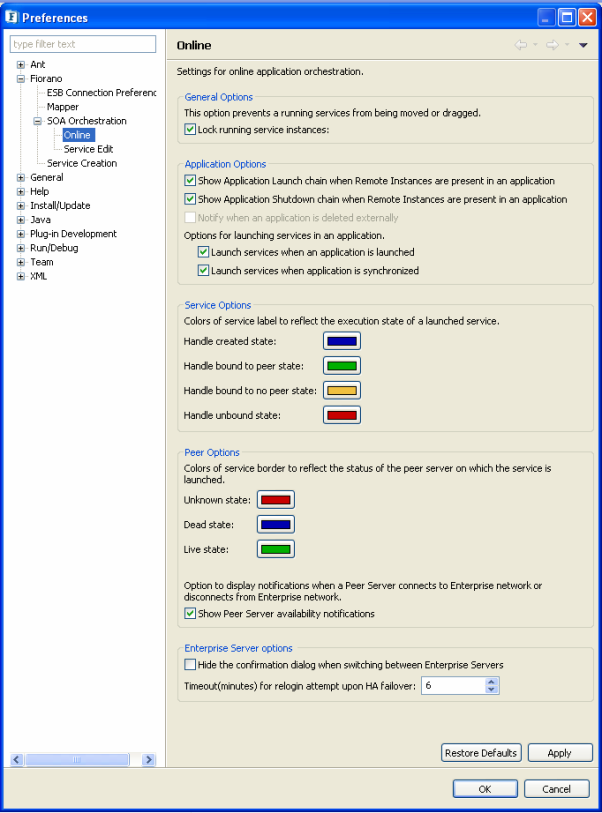
Figure 10: Online Orchestration preferences
General Options
Lock running service instances: This option prevents the service instances from being moved or dragged when an Event Process is running.
Application Options
Launch Services when application is synchronized: If this option is enabled, in a running Event Process, service instances in stopped state will be started if the user clicks the Synchronize button in an Event process.
Service Options
The color of the Service Instance label name at different execution status can be configured from here, that is, when a Service Instance is running, stopped and so on.
By default when a Service Instance is dragged and dropped the instance name color is Black. The states and corresponding Service instance label name colors are explained below.
- Handle Created State: This color is shown when the service instance handle is created. This happens before the component is launched completely.
- Handle Bound to Peer state: This color is when the service instance is running.
- Handle Bound to no peer state: This color is shown when the peer server on which the component is running is stopped.
- Handle unbound state: This color is shown when the component in a running Event Process is stopped.
Peer Options
These are the colors applied to service instance border to reflect the status of the peer server on which the service instance is configured to launch.
- Unknown State: The peer server configured is unknown. i.e. the peer server configured is not running and is not present in peer repository node under Enterprise Server node.
- Dead State: The peer server configured is not running but it is present in peer repository node under Enterprise Server node.
- Live State: The peer server configured is present in Peer repository and is running.
- Show Peer Server availability notifications: Whenever a peer server connects to the Enterprise Server or disconnects from Enterprise network, a notification dialog appears.
Enterprise Server Options
These are the options applicable to the Enterprise Server prior to login or relogin from the eStudio.
Hide the confirmation switch dialog: If this option is enabled when the user is working on multiple servers, the user is no longer prompted with a confirmation dialog to switch the active server and an incative server will be automatically made active whenever the user wants to perform any action (Open Event Process, delete Event Process, CRC, Launch, Import, Export, and so on) on that Enterprise Server.
Time to relogin upon HA failover: If this time is set to a particular value when the user is working on HA servers, the failure of the active server triggers the enterprise server node connected to that server, to reconnect to the backup server or the same server whichever becomes active within the specified time interval (in minutes). In case the server(s) takes too long to switch their state(s), a message is logged on the console and the attempt to relogin to studio is failed. It is advisable to increase the time in this case approximately to the time taken by any of the servers to become active.
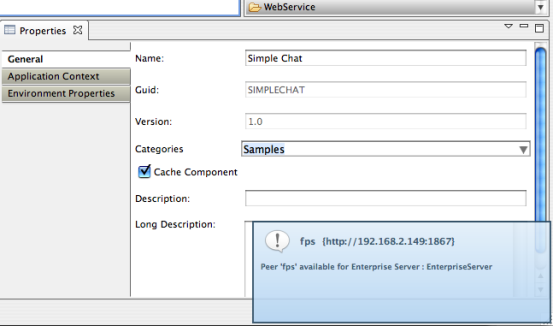
Figure 11: Peer server notification
This option is to enable or disable the notifications.
Key Board Short Cut Preferences
Before using Key Board shortcuts Fiorano scheme has to be set in Preferences (Window -> Preferences -> General -> Keys).
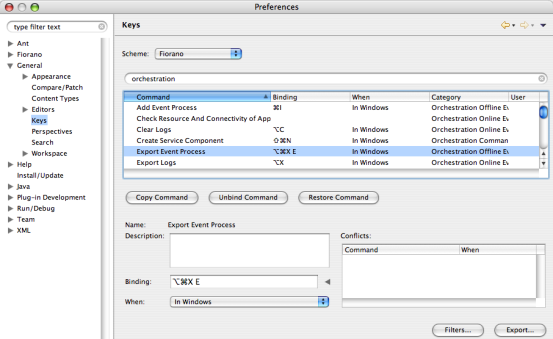
Figure 12: Key-binding preferences
The default Key Board shortcuts for various actions are listed below.
- Help F1
- Rename F2
- Undo Ctrl + Z
- Redo Ctrl + Y
- Add Event Process CTRL + I
- Open Event Process CTRL + O
- Import Event Process CTRL + ALT + I E
- Import Event Process (nStudio) CTRL + ALT + I N
- Import Service (from Local Disk) CTRL + ALT + I L
- Import Service (from Server) CTRL + ALT + I S
- Export Event Process CTRL + ALT + X E
Insert
1. Service Instance CTRL + ALT + A S
2. Event Process CTRL + ALT + A E
3. Remote Service Instance CTRL + ALT + A R
CRC ALT + Shift + C
Run Application ALT + Shift + R
Synchronize ALT + Shift + S
Stop Application ALT + Shift + K
View
1.View Debugger CTRL + ALT + V D
2.View Properties CTRL + ALT + V P
3.Logs CTRL + ALT + V L
4.View Error ports CTRL + ALT + V E
5.View Route Names CTRL + ALT + V R
Clear Logs ALT + C
Export Logs ALT + X
Toggle Lock Mode ALT + Z
Schema repository CTRL+Shift+S
Create Service component CTRL+Shift+N
The option to edit keyboard shortcuts is also available under General > Keys section in the preferences dialog. The list of Fiorano Orchestration commands can be viewed by entering Orchestration in the filter box provided above the available keys. The shortcut for any of the action/command can be changed by editing the Binding text field available below the keys table section.